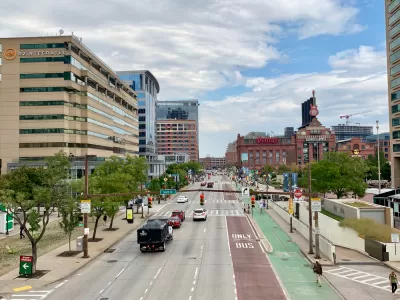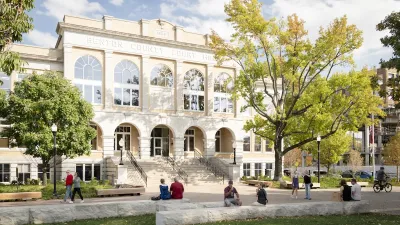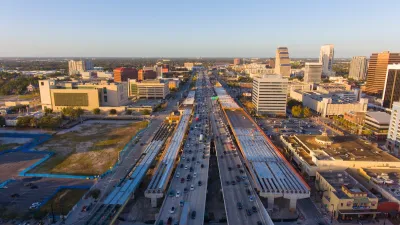Neighborhoods of color are often more dangerous for pedestrians and cyclists, but they are also often left behind when local officials redesign streets to make them safer. How can we change this?

Baltimore bike lovers’ efforts to complete an extended network of protected bike lanes took a hit this summer.
City officials constructed the two-mile long, east-west portion of the route along East Monument Street, directly past Fountain Baptist Church. This is a largely Black area of the city where, according to census data, more than half of the population lives below the poverty line and most residents do not own a car.
After church leaders cried foul because they lost some on-street parking spots, the city removed a portion of the lane, redirecting southbound bike users to the sidewalk, over the objections of bike advocates who said that made the lane less safe.
The Fountain Baptist Church flap illustrates a problem plaguing communities nationwide. Neighborhoods with less affluence and with more people of color are often more dangerous for pedestrians and cyclists, but they are also often left out of the planning and design phases when local governments decide to redesign streets to make them safer for everyone. In the Baltimore case, the politically powerful church leaders exerted more influence than Complete Streets advocates.
Advocates for safer sidewalks and roadways say there are numerous reasons why marginalized communities would get a raw deal when it comes to Complete Streets, the increasingly popular transportation policy approach that envisions roadways that are designed to be safer for drivers, cyclists, and pedestrians.
Adonia Lugo, an urban anthropologist and board co-chair of Los Angeles-based People for Mobility Justice, says a major problem with the Complete Streets philosophy is that it’s focused on redesigning neighborhoods often with little or cursory input from the people who live in them.
”It’s just a reflection of the broader reality that a lot of times marginalized communities have not gotten to be participants in planning processes,” Lugo says.
FULL STORY: Bike Lanes Aren’t Just a White Thing

Alabama: Trump Terminates Settlements for Black Communities Harmed By Raw Sewage
Trump deemed the landmark civil rights agreement “illegal DEI and environmental justice policy.”

Planetizen Federal Action Tracker
A weekly monitor of how Trump’s orders and actions are impacting planners and planning in America.

The 120 Year Old Tiny Home Villages That Sheltered San Francisco’s Earthquake Refugees
More than a century ago, San Francisco mobilized to house thousands of residents displaced by the 1906 earthquake. Could their strategy offer a model for the present?

Ken Jennings Launches Transit Web Series
The Jeopardy champ wants you to ride public transit.

BLM To Rescind Public Lands Rule
The change will downgrade conservation, once again putting federal land at risk for mining and other extractive uses.

Indy Neighborhood Group Builds Temporary Multi-Use Path
Community members, aided in part by funding from the city, repurposed a vehicle lane to create a protected bike and pedestrian path for the summer season.
Urban Design for Planners 1: Software Tools
This six-course series explores essential urban design concepts using open source software and equips planners with the tools they need to participate fully in the urban design process.
Planning for Universal Design
Learn the tools for implementing Universal Design in planning regulations.
Clanton & Associates, Inc.
Jessamine County Fiscal Court
Institute for Housing and Urban Development Studies (IHS)
City of Grandview
Harvard GSD Executive Education
Toledo-Lucas County Plan Commissions
Salt Lake City
NYU Wagner Graduate School of Public Service





























